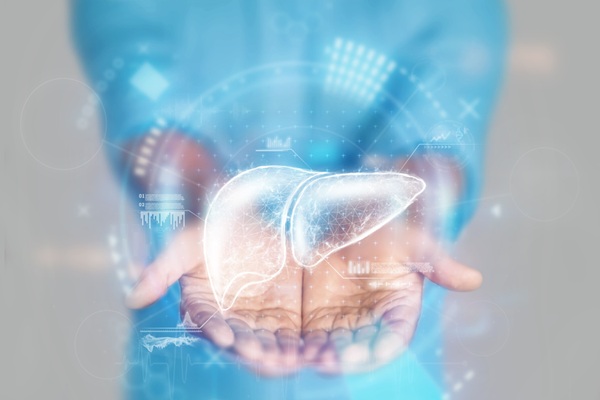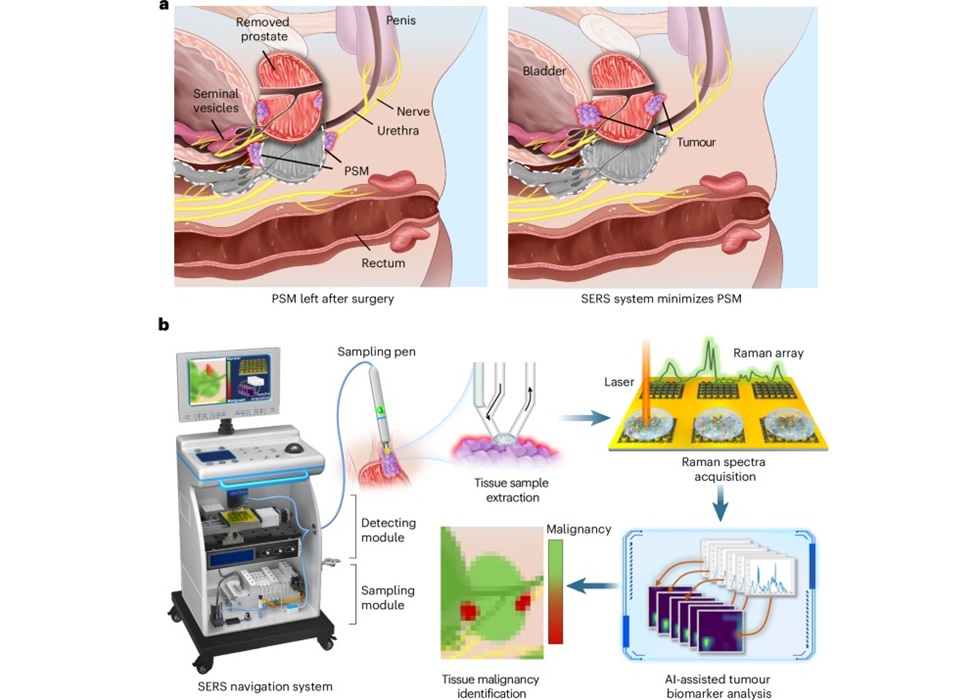Agile Tests Done at Bedside Could Help Meet Challenges in Critical Care
|
By HospiMedica International staff writers Posted on 04 Jul 2022 |
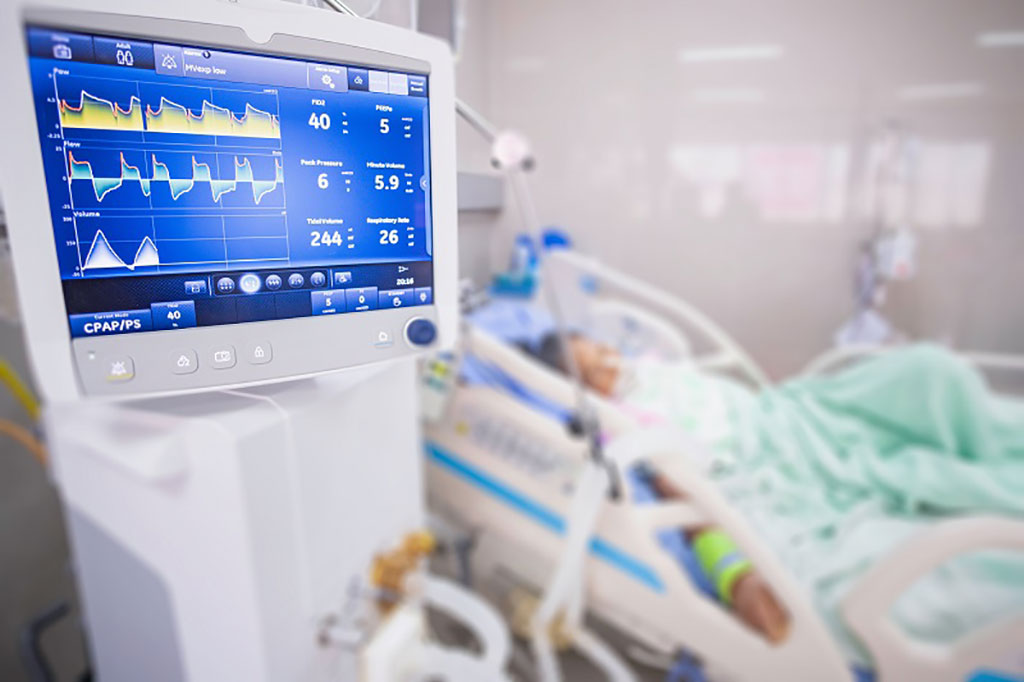
When patients are admitted to an intensive-care unit, health practitioners provide treatment based on the signs and symptoms they observe. This approach does not necessarily include understanding the definite causes behind those symptoms. However, even though some patients might present similar symptoms, the underlying biology of their illnesses can vary, which helps to explain why patients with the same signs and symptoms often respond differently to treatments. In recent years, technological advances in molecular sciences, big data, and machine learning have allowed researchers to dig deeper in understanding illnesses and symptoms. This new knowledge can radically change how health practitioners approach critical care at the individual patient level.
In a recent paper published in Nature Medicine, researchers at Queen's University (Kingston, ON, Canada) have argued that it is time for a paradigm shift in critical care. David Maslove (School of Medicine) who along with his colleagues published the paper spoke to the Gazette about how the COVID-19 pandemic advanced critical care research and what knowledge gaps we still need to address to put this new approach into practice. Over the last decade or two, as new tools in molecular medicine such as genomics and gene expression profiling came into wider use, health practitioners began to apply them in critical care. Those technologies allow a much deeper look at what is happening at the level of the cell and the genome when somebody is critically ill. They also generate massive quantities of data – data that traditional statistical methods do not always handle in intuitive ways. As a result, machine learning approaches perfectly complement the new data derived from these technologies: they reveal hidden patterns that can provide insights into the heterogeneity or diversity of critical illness syndromes, according to Maslove.
Since a group of critically ill patients were all affected by the same pathogen – the COVID19 virus, SARS-CoV-2, Maslove believes that there was a tremendous opportunity to test potential treatments in a group that was more homogeneous than usual, increasing the chances that a therapy would on average affect everyone the same way. Researchers were able to promptly design and perform randomized clinical trials to test potential therapies, and they identified some effective treatments. Prior to that, because clinical trials were treating heterogeneous groups, some patients benefitted from the treatment and others did not. It was harder to tell if the proposed treatment worked for anyone. On a practical level, researchers learned some key lessons about the importance of research infrastructure to be able to collect and analyze data quickly, and the importance of being ready to efficiently enroll patients into clinical trials, according to Maslove. They also reaffirmed that randomizing treatments is the best way to identify which ones work best. Critical care scientists from all over the world were working together towards a singular goal, reaffirming the importance of international collaboration.
Maslove believes that there is need to clarify what it means to respond to a treatment in the ICU context, where cases are so dynamic and complex that it can be difficult to understand whether a treatment has provided benefit in any given case. There is also a need for biomarkers that can be used to identify patients who are more or less likely to respond to a given treatment. In critical care, a particular challenge is that health practitioners cannot send a blood test off to a lab far away and wait for a complex testing like RNA sequencing to be completed. There is a need for agile tests that can be done at the bedside, according to Maslove. With this kind research, there is a shift towards precision medicine, an approach pioneered in cancer treatment, which offers tremendous potential benefits. By identifying which patients are most likely to respond to which treatments, health practitioners can increase the efficiency of the care that they provide. The precision medicine approach also spares patients from ineffective treatments.
Related Links:
Queen's University
Latest Critical Care News
- Magnetically Guided Microrobots to Enable Targeted Drug Delivery

- Smart Nanomaterials Detect and Treat Traumatic Brain Injuries Simultaneously
- Earlier Blood Transfusion Could Reduce Heart Failure and Arrhythmia in Heart Disease Patients
- 'Smart' Shirt Detects Epileptic Seizures in Real Time
- Skin Patch Measures Effectiveness of Flu/COVID Vaccines in 10 Minutes
- Complete Revascularization Reduces Risk of Death from Cardiovascular Causes
- Tiny Fish-Inspired Robots Navigate Through Body to Deliver Targeted Drug Therapy
- Coronary Artery Stenosis Could Protect Patients from Pulmonary Embolism Effects
- Sweat-Powered Sticker Turns Drinking Cup into Health Sensor
- Skin-Mounted 3D Microfluidic Device Analyzes Sweat for Real-Time Health Assessment
- New Therapeutic Brain Implants to Eliminate Need for Surgery
- Stem Cell Patch Gently Heals Damaged Hearts Without Open-Heart Surgery
- Biomaterial Vaccines to Make Implanted Orthopedic Devices Safer
- Deep Learning Model Predicts Sepsis Patients Likely to Benefit from Steroid Treatment
- Programmable Drug-Delivery Patch Promotes Healing and Regrowth After Heart Attack
- Breakthrough Ultrasound Technology Measures Blood Viscosity in Real Time
Channels
Surgical Techniques
view channel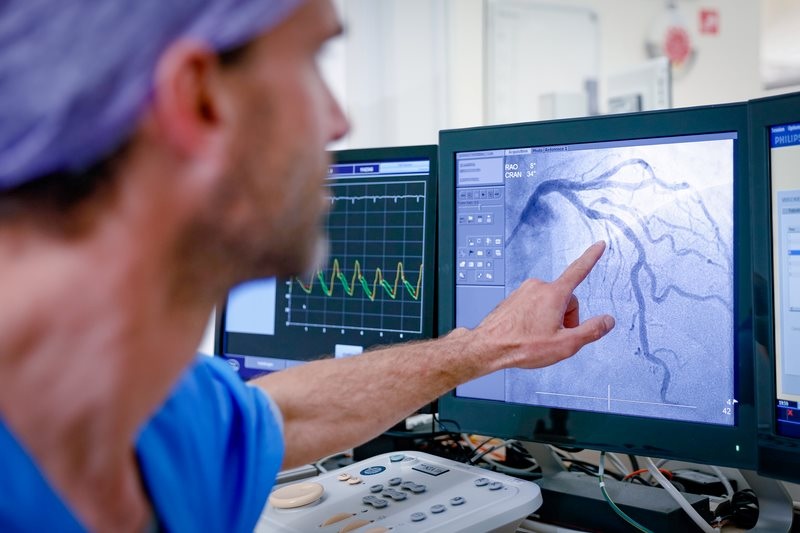
New Study Findings Could Halve Number of Stent Procedures
When a coronary artery becomes acutely blocked during a heart attack, opening it immediately is essential to prevent irreversible damage. However, many patients also have other narrowed vessels that appear... Read more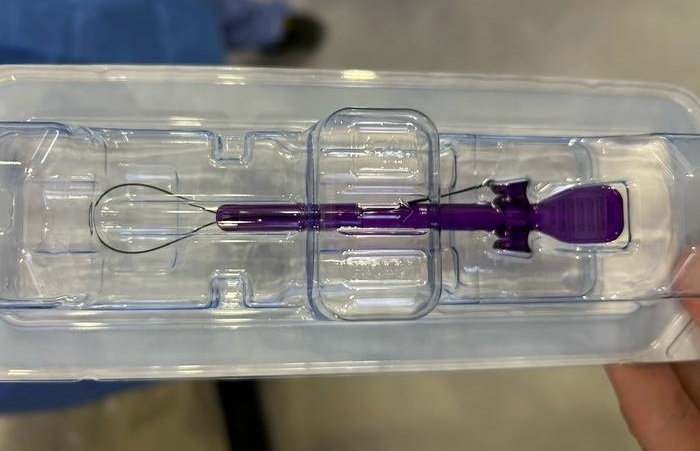
Breakthrough Surgical Device Redefines Hip Arthroscopy
Hip arthroscopy has surged in popularity, yet surgeons still face major mechanical constraints when navigating deep joint spaces through traditional cannulas. Limited tool mobility and the need for an... Read morePatient Care
view channel
Revolutionary Automatic IV-Line Flushing Device to Enhance Infusion Care
More than 80% of in-hospital patients receive intravenous (IV) therapy. Every dose of IV medicine delivered in a small volume (<250 mL) infusion bag should be followed by subsequent flushing to ensure... Read more
VR Training Tool Combats Contamination of Portable Medical Equipment
Healthcare-associated infections (HAIs) impact one in every 31 patients, cause nearly 100,000 deaths each year, and cost USD 28.4 billion in direct medical expenses. Notably, up to 75% of these infections... Read more
Portable Biosensor Platform to Reduce Hospital-Acquired Infections
Approximately 4 million patients in the European Union acquire healthcare-associated infections (HAIs) or nosocomial infections each year, with around 37,000 deaths directly resulting from these infections,... Read moreFirst-Of-Its-Kind Portable Germicidal Light Technology Disinfects High-Touch Clinical Surfaces in Seconds
Reducing healthcare-acquired infections (HAIs) remains a pressing issue within global healthcare systems. In the United States alone, 1.7 million patients contract HAIs annually, leading to approximately... Read moreHealth IT
view channel
EMR-Based Tool Predicts Graft Failure After Kidney Transplant
Kidney transplantation offers patients with end-stage kidney disease longer survival and better quality of life than dialysis, yet graft failure remains a major challenge. Although a successful transplant... Read more
Printable Molecule-Selective Nanoparticles Enable Mass Production of Wearable Biosensors
The future of medicine is likely to focus on the personalization of healthcare—understanding exactly what an individual requires and delivering the appropriate combination of nutrients, metabolites, and... Read moreBusiness
view channel
Philips and Masimo Partner to Advance Patient Monitoring Measurement Technologies
Royal Philips (Amsterdam, Netherlands) and Masimo (Irvine, California, USA) have renewed their multi-year strategic collaboration, combining Philips’ expertise in patient monitoring with Masimo’s noninvasive... Read more
B. Braun Acquires Digital Microsurgery Company True Digital Surgery
The high-end microsurgery market in neurosurgery, spine, and ENT is undergoing a significant transformation. Traditional analog microscopes are giving way to digital exoscopes, which provide improved visualization,... Read more
CMEF 2025 to Promote Holistic and High-Quality Development of Medical and Health Industry
The 92nd China International Medical Equipment Fair (CMEF 2025) Autumn Exhibition is scheduled to be held from September 26 to 29 at the China Import and Export Fair Complex (Canton Fair Complex) in Guangzhou.... Read more











